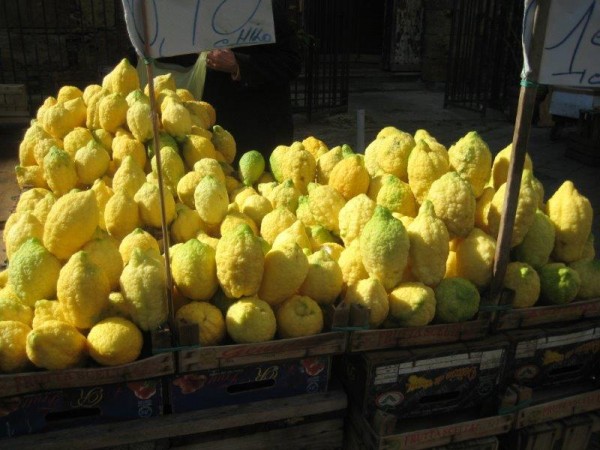 SICILY, eh? One minute it can make you smile, the next it makes you want to weep. It all depends on which of Sicily’s faces you’re seeing.
SICILY, eh? One minute it can make you smile, the next it makes you want to weep. It all depends on which of Sicily’s faces you’re seeing.
Five minutes spent in its crazy capital Palermo and you’re mourning the neglect of its glorious palazzi and the poverty that confronts you on all sides.
Escape the madness and visit its ancient treasures – the Greek temples, the incomparable mosaics, the Mediterranean beaches – and you’ll wonder why the whole world isn’t queuing up to pay homage.
If Italy’s southernmost province leaves your emotions in turmoil, then the food, the wine, the climate and the warmth of its people will win you over. Sicily encapsulates all southern Italy’s dottiness and then sprinkles in some of its own.
Twelve years after exploring the eastern half of the island and being captivated by Syracuse, Etna and Taormina, we returned to check out the west. An apartment in central Palermo was our base.
It is a city that perfectly illustrates past glories. Like Naples, it is adorned with once- magnificent palazzi now, with few exceptions, in a dire state of decay, graffiti, neglect. The streets are litter-strewn and unmaintained.
magnificent palazzi now, with few exceptions, in a dire state of decay, graffiti, neglect. The streets are litter-strewn and unmaintained.
The traffic is a nightmare cross between Mumbai rush-hour and a souped-up dodgem ride, played out against an ear-splitting backdrop of car horns, revving engines, ambulance sirens and excited Sicilian voices.
For all its recent progress Sicily remains trapped in grinding poverty and jobs are as scarce as dent-free cars. When it comes to everyday life, Palermo is more Slumdog Millionaire than La Dolce Vita.
Accustom your central nervous system to Palermo’s throbbing pulse and the city offers much to enthral the visitor. Extraordinary Roman, Byzantine and Arabic mosaics, a legacy of some of Sicily’s conquerors down the centuries, make the Cappella Palatina, and King Roger’s adjacent royal apartments, a must-see destination
Likewise, in the Oratorio di San Lorenzo, with Sarpotta’s famous sculptures, and the Cathedral is as impressive as you’d expect but with a pleasing simplicity that you wouldn’t. The cavernous Teatro Massimo is Italy’s largest theatre, while Palermo’s street markets are an entertainment in themselves.
 But flee Palermo’s ear-bashing bedlam and you discover a very different Sicily: dramatic landscapes, quiet little settlements and some of the best archaeological sites in Europe.
But flee Palermo’s ear-bashing bedlam and you discover a very different Sicily: dramatic landscapes, quiet little settlements and some of the best archaeological sites in Europe.
The island’s previous incumbents have left some marvellous reminders of their civilisations and none more so than the Greek temples, from long before Christ, at Agrigento, Selinunte and Segesta.
 The little town of Erice, perched on a mountain and famed throughout the ancient world as the home of the goddess Aphrodite, offers views that seem to embrace half of Sicily, while the great mosaic-encrusted cathedral at Monreale is a favourite wedding destination for romantics from far and wide.
The little town of Erice, perched on a mountain and famed throughout the ancient world as the home of the goddess Aphrodite, offers views that seem to embrace half of Sicily, while the great mosaic-encrusted cathedral at Monreale is a favourite wedding destination for romantics from far and wide.
Sicily is truly a multi-layered confection. Mother Nature, an eclectic past and some once-dazzling architecture have bequeathed it so much. Even the dark shadow of the Mafia seems to be receding. The islanders, exhausted after decades of bloodshed, have found the courage to offer defiance.
Yet Sicily’s friendly, proud inhabitants seem happy enough to drift through their lives while all around them so much of their heritage decays and great palazzi turn into slums.
Sicily, warts and all, has no shortage of fans. The thing is, though, that with a little more energy, so much of it could be so much better.
David Eidlestein
For a longer version of this article and more photos please visit www.dorsetdaze.wordpress.com
Pictured are: A view of the Gulf from the village of Erice; the ancient Greek temple at Segesta; delicious fat Sicilian lemons at Palermo’s Ballaro market; the cloisters at Monreale cathedral; traffic and graffiti in Palermo; the world-famous mosaic s at the Cappella Palatina in Palermo.